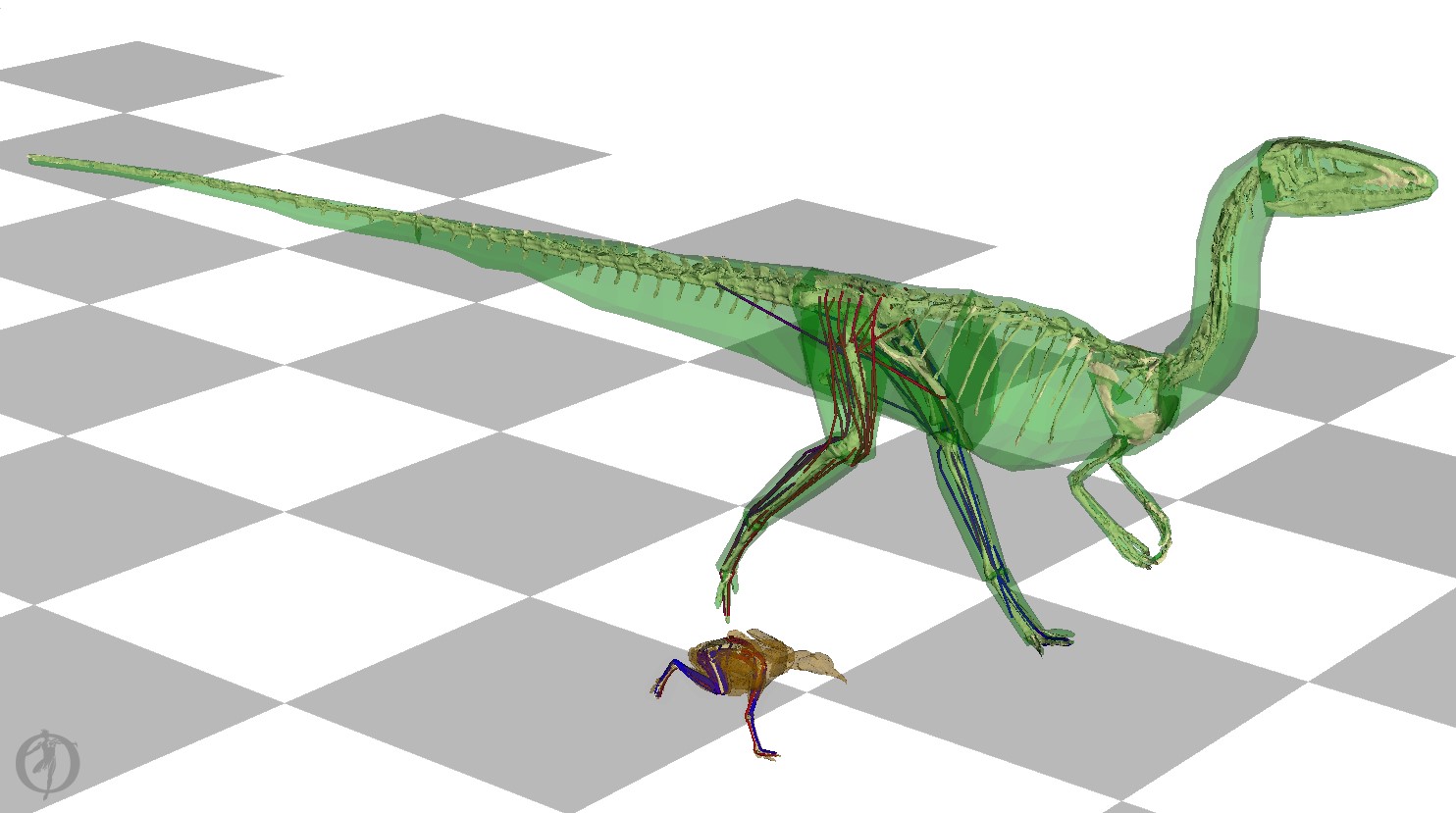News release
From:
New research shows dinosaurs wagged tails while running
Rover is not the only one who can wag his tail, it turns out the T-rex is just behind him, with new research proving dinosaurs wagged their tails as they ran.
The research undertaken at the Royal Veterinary College (RVC) in London was led by Queensland Museum Network Honorary Dr Peter Bishop, who is currently a research fellow at Harvard University in the USA.
The team of researchers included palaeontologists, biomechanists and engineers from across the world and the scientific paper was the culmination of more than three years’ work.
Dr Bishop said previous studies have always treated non-avian dinosaur tails as a static rear extension of the pelvis that acted as a counterbalance.
“Essentially, our findings show that dinosaurs like Tyrannosaurus and Velociraptor wagged their tails from side to side when they ran, which helped them stay balanced,” Dr Bishop said.
“When I first saw the simulation results I was very surprised, but after running a range of further simulations making the tails heavier, lighter and even no tail at all, we were able to conclusively demonstrate that the tail wagging was a means of controlling angular momentum throughout their gait.”
Angular momentum is a principle that dictates how ballerinas and figure skaters can execute pirouettes.
The research used sophisticated computer simulations and leveraged new methods developed by engineers and included modelling of a small carnivorous dinosaur Coelophysis, a 210-million-year-old theropod, weighing around 15 kilograms.
However, this research moves beyond speculation of the tail’s importance, and mechanically demonstrates a previously unrecognised, crucial and 3D dynamic role.
Professor of Evolutionary Biomechanics at the RVC and co-author of the study, Dr John Hutchinson said the simulations accurately replicated movement in a modern theropod dinosaur (a bird).
“These cutting-edge, three-dimensional simulations show that we’ve still got much to learn about dinosaurs,” Dr Hutchinson said.
“Our results raise interesting questions about how dinosaur tails were used in a whole array of behaviours, not just including locomotion, and how these functions evolved.”
This is not the first time Dr Bishop has developed models and computer simulations in his research, with previous research at Queensland Museum Network accurately predicting how dinosaurs walked when comparing them with birds.
Minister for the Arts Leeanne Enoch said the study outcomes demonstrated the calibre of Queensland Museum and its research fellows.
“Research conducted under Queensland Museum continues to make a significant mark on an international level and the Palaszczuk Government is proud to support Queensland Museum in its research endeavours,” Minister Enoch said.
“I commend Dr Bishop for his work in helping us to better understand Tyrannosaurus and Velociraptors and how they navigated their worlds.”
“Dr Bishop’s contributions will go a long way towards progressing global research on dinosaurs and further cement Queensland as the dinosaur capital of Australia.”
Queensland Museum Network CEO Dr Jim Thompson said it is always an honour to see the international spotlight on our researchers and honoraries.
“Dr Bishop’s new paper is an extension of the research he began while working with Queensland Museum Network palaeontologists over a number of years and we are proud to have him as an honorary,” Dr Thompson said.
“This research gives us greater insight into how dinosaurs moved and may very well change the way we see dinosaurs depicted in films such as Jurassic Park in the future.”
The new research was recently published in the journal Science Advances.
Media Enquiries:
Christine Robertson, Senior Media Officer, 0417 741 710
Kylie Hay, Senior Media Officer, 0434 565 852



 Australia; International; QLD
Australia; International; QLD



